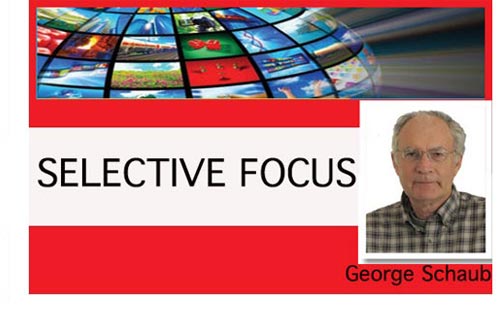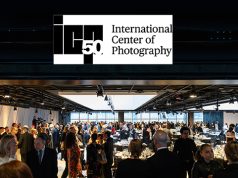
One of the first questions I ask in a class I teach on using a digital SLR is: “How many here have ever shot film?” Not too long ago about half the class would say they had; these days, more often than not, no one has. I would venture to say that anyone who’s reached voting age has never and never will put a roll of film in a camera. (And you have to wonder how many will have actually made photos with a real live camera.)
This raises some obvious issues: how to market photography products outside the tablet and phone realm; how to sell software that is not a push-button affair; and how to get people to do something with their photos, like make prints and books, beyond posting to a social media site.
Another issue it raises, and the subject of this column, is the relevancy of the terminology we use to describe our products. Yes, right now most of the terms we use are fairly obvious to those with some photographic, i.e., film, experience. But does it all make sense to the filmless generation? For example, we have a rather confusing nomenclature to describe and differentiate sensors, focal length and camera types. Frankly, even those with a fairly solid background in the craft show bewilderment at some of the terms we currently use. With that in mind, following are some of the remnant terminology challenges I think we’re facing today.
Focal Length
The first phrase we reach for when describing a lens is its focal length. Aside from the academic definition having to do with the distance from the nodal point to the image plane when the lens is focused at infinity, which is not helpful here, most classify and use focal length as a matter of field coverage, that is, how wide or narrow the frame encompasses the scene when the lens is mounted. For most in the trade press, lens makers and their marketing departments, this is described in terms of, or equivalent to, 35mm format (known oddly as “full frame” in digital cameras but basically 24x36mm in size and a 2×3 aspect ratio).
So, a 24mm lens remains a 24mm lens in terms of focal length regardless of the camera on which it is used, but it does not always behave like one for those who shot 35mm film and now reside in the digital world. In some cases, it moves from a wide to “normal” coverage (that is, a 50mm equivalent) or, in the case of very small sensors, beyond and sometimes in-between, when it delivers the equivalent of 36mm coverage. In other words, what’s often dubbed the “field of view” is all over the map when using the same focal length lens.
This might easily be solved with integral-lens cameras, where the lens is affixed and we know how the sensor size affects the coverage, by just labeling a lens, say, as wide to normal (with normal being a range that approximates normal peripheral vision), or wide to telephoto, or normal to super-telephoto, and so forth. We can then leave the actual focal length to those who bother to read the tech specs. But certainly the challenge remains for an interchangeable-lens camera and the so-called multiplication factor enforced by fitting the lens onto camera bodies containing different size sensors. Right now, you’ll see all the camera types—Micro Four Thirds, compact system, APS-C and full-frame DSLRs—all using the same 35mm-format reference when labeling their lenses. But let’s face it, selling a 70–200mm zoom to those who in effect will be shooting with a 140–400mm equivalent imposes rather different shooting strategies and results.
“Fast” Lenses
When you think of a fast lens you might be conjuring a lens with a wide maximum aperture, like f/1.4 or even f/2. For most folks, I imagine that fast probably means its autofocusing ability—that it can pick up the intended subject with minimal delay and be responsive to the user’s intentions. But we continue to use the fast or “speed” terms. As a quick fix, how about dubbing lenses “low light,” “general use” or “bright light” lenses? Yes, image stabilization has helped redefine how lenses can be used in different lighting, but just like focal length, there is an “academic” definition and one that actually helps folks make the right choice for their needs.
While we’re on the subject, let’s think about what to call “variable aperture” model lenses, like f/2.8–5.6 or, in some instances with less expensive models, even f/3.5–8. While we tout the maximum aperture as being a low-light and shallow depth-of-field-producing option, the truth is that many variables only yield max aperture at the widest focal length setting and drop very quickly (sometimes immediately) to the narrowest aperture when the lens is zoomed. This often reduces or eliminates any shallow depth-of-field advantage and makes low-light shooting at tele focal length settings problematic. But I guess that’s why more and more variables are featuring image stabilization.
Sense and Sensor-ability
It might seem like I’ve been picking on lenses, but in fact the root of the problem is the whole sensor size issue. Talk about a confusing situation—after we got folks all heated up about megapixels, and then backed off when marketing finally figured out that more is not always more quality, the megapixel race was overtaken by the sensor size battle. Now it’s not the number of the pixel sites that count but the acreage of the sensor itself.
Don’t get me wrong—there’s no doubt that all things being equal, larger sensor size improves low-light shooting with less noise, allows for creative cropping in larger print sizes and certainly eliminates the focal length conundrum. But I’m not the guy you have to convince or explain this to.
Let’s look at what we’re offering these days: full frame, Micro Four Thirds, compact system cameras, compact cameras and even medium format, although the last can be thrown out as self-explanatory to those who can afford them. All these terms define sensor sizes, and in the compacts there are more variables. And each of these have an effect on “effective” focal length and the dreaded multiplier effect, which brings us back to the 35mm frame as the standard by which all are measured and defined. For most folks who haven’t shot film, that doesn’t mean a whole heck of a lot.
Given we are facing some pretty stiff competition from the mobile imaging crowd, this confusion of terms cannot be serving us well and cannot make it easy for those standing on the cash register side of the counter. There’s got to be a better way to do this so we can adapt to the experience and expectations of those coming into this market who do not base their photographic knowledge or buying decisions on film and film formats. Stand a phone shooter in front of you who wants to move up in image quality and explain this to him or her in a way that doesn’t immediately blow their mind and you’ll see what I mean.
We often live in a photo industry bubble and don’t get outside it enough to hear what we’re pitching. Some of us even revel in the labyrinth we’ve created. My aim is not to pose a solution but to state the problem as I see it.
I have discussed this with editors from other trade and consumer magazines, and it is now the cause of some serious debate among us, but it’s an issue I think we can and should all address. Somehow we have to break the tyranny of the 35mm-format standard and begin to address the amazing features and functionality of what the photo industry has to offer—but let’s do it in a meaningful, 21st century way for the next generation of our customers.





